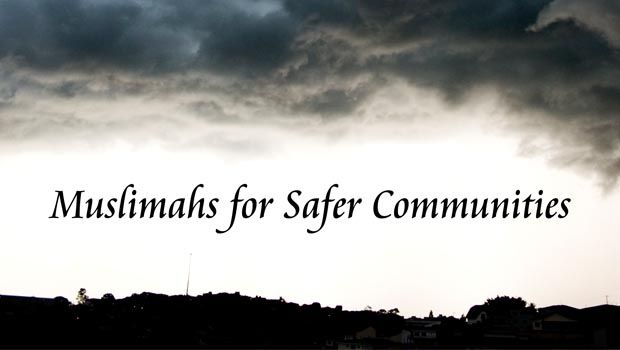On a cold, dark Canadian night, twelve girls with flashlights took a walk around an elementary school and community center in their city. Working from a checklist, they examined the safety of the area with attention to lighting, signs, maintenance, surveillance and security issues, and accessibility. After an extensive discussion, they decided that the primary safety issue was the lack of a crosswalk at the intersection in front of the school. The girls, ages twelve to fourteen, conducted research on road and traffic safety, and then wrote a letter expressing their concern to their city council. After a site inspection, the Traffic Safety Council decided a crosswalk was not warranted, but that there was a need to improve signage and enforce parking infractions along the street in the vicinity of the school. When the girls heard the decision, they felt a deep sense of gratification and empowerment. Through participation in the Girls for Safer Communities program, they learned to take responsibility for their community, exercise their rights in a local democracy, and make their voices heard by individuals in positions of power.
The need to engage women and girls in crime prevention and community safety was the motivation behind the development of the Girls for Safer Communities program by the Girl Guides of Canada.
The need to engage women and girls in crime prevention and community safety was the motivation behind the development of the Girls for Safer Communities program by the Girl Guides of Canada. The Girl Guides of Canada (GGC) is part of a global movement to enable girls and women to develop their potential as responsible citizens. Created in 1910, GGC now has over 120,000 members. GGC launched the Girls for Safer Communities (GFSC) program in 2010 with the aim of increasing awareness about the safety concerns of girls and women, while mobilizing girls to become leaders in their communities. Through GFSC, girls ages twelve to seventeen receive leadership and safety training that prepares them to guide others on safety audit walks, to identify safety concerns, and to make recommendations and create action plans that will improve safety.
For the past two years, I volunteered as a Project Mentor for the GFSC Program in Ontario, Canada. I trained over forty adolescent girls, helping them to acquire a positive leadership style, enhance their communication skills, and view their communities in new ways. When the local roll-out of the GFSC program came to an end a few months ago, I still had promotional materials and several booklets left over. As the weeks passed, I missed working closely with girls on the themes of leadership and community safety, and I hated to see the resources I had sit idle on my bookshelf. It was then that I decided to bring the GFSC program along with me on a trip to visit my family in Bakersfield, California.
Bakersfield has a growing Muslim community with two mosques and frequent Islamic classes, events, and gatherings for women and youth. My mom, Insaf Ali, is an active member of the Al-Farooq Islamic Center, where we ultimately decided to hold a GFSC training session. Through word-of-mouth advertising we quickly registered fifteen girls for the two-day, six-hour program. Our girls ranged in age from 10 to 18 and had roots in Yemen, India, Egypt, Palestine, and Somalia, among other countries. I tailored my PowerPoint slides and content to incorporate Islamic themes, images, and examples the girls could relate to. Fortunately, the GFSC booklet already included images of a girl with the hijab (headscarf). At the end of the second day of training, the girls worked in small groups to assess the safety of the mosque and surrounding area. They found that the mosque property was well-maintained, accessible to the blind and disabled, and featured surveillance cameras for security purposes. Outside of the gates of the mosque, however, the girls identified several areas for improvement, including the need for more street lighting, removal of graffiti, and better maintenance of sidewalks.
Mosque officials and parents were elated. “We have never offered a program like this to our girls before” said mosque leaders.
Mosque officials and parents were elated. “We have never offered a program like this to our girls before” said mosque leaders. “Our girls need to be empowered and need to be more active and visible in their communities” explained a mother of three, “especially at this age when they are beginning to question their identity and role in society.” Another parent was delighted to learn that Girl Guides and Girl Scouts focus on leadership and personal development. As a result of the success of the program, the mosque is even considering the development of ongoing leadership seminars for both girls and boys.
As a Muslim, Canadian Girl Guide, and former American Girl Scout, I try to live by the promise to “help other people at all times.” I could not have imagined a better way of living this promise than bringing a Canadian Girl Guide program to a small group of enthusiastic American-Muslim girls in California’s Central Valley. As the girls began gathering their belongings at the end of the training, one girl in the front row stopped for a moment and then exclaimed “I don’t want it to be over.” I smiled and said, “Me neither.”
To empower young Muslimahs in your community and learn more about the Girls for Safer Communities program, please visit the Girl Guides of Canada website at https://www.girlguides.ca. Under “Specialized Programming” you will find a description of the program and free resources. You are also welcome to e-mail me at Jenna_Evans@rogers.com to request a copy of the PowerPoint slides and other content I have developed specifically for Muslim girls.





